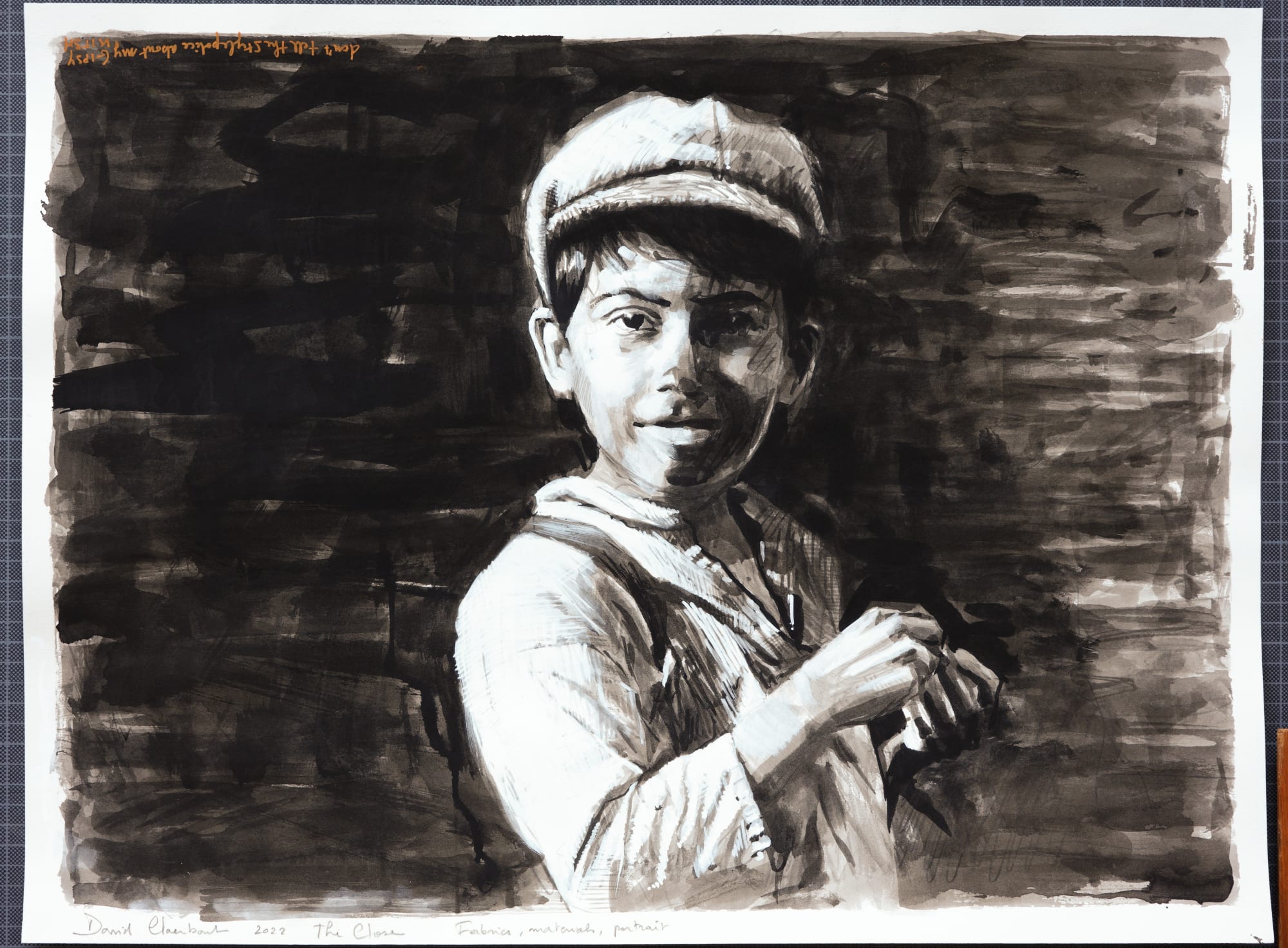
드로잉은 다비드 클라어바우트의 작업 과정에서 매우 중요한 부분을 차지한다. 모든 프로젝트에는 드로잉이 수반된다. 이는 연구 자료, 또는 영상 촬영 중 맞닥트린 문제와 제작 중 드러난 개념들을 기억하기 위한 메모로 기능하기도 한다. 작가는 “드로잉은 나의 아이디어를 종이에 옮겨 기록하는 방법 중 가장 적합 한 매체”라고 말한다.
이 작품은 초기 시네마를 묘사하는 흑백 영상 작품, <The Close>의 화면을 옮긴 드로잉 연작 중 하나다. 영상을 정지시켜 놓은 것 같은 화면은 무수한 필름 프레임 중 하나를 보는 듯하다. 작품은 에 등장하는 인물과 세트장을 그린 것이다. 영상의 미적 요소가 잉크와 아크릴 물감의 번짐으로 아름답게 묘사되었다.
는 벽돌 벽으로 이루어진 골목을 비춘다. 골목에는 구식 복장을 한 인물들이 서둘러 지나가거나 팔짱을 끼고 산책하는 등 다양한 활동을 하고 있다. 인형을 들고 있는 한 노인은 몇몇 아이들이 돌아다니는 화면의 전경에서 헤매는 듯한 모습이다. 몇몇 행인들은 나타났다가 사라지기를 반복하고, 작업자들은 거리를 청소하며, 아이들은 놀이를 계속하는데, 간헐적으로 골목이 비는 모습도 볼 수 있다.
David Claerbout's drawings are an integral part of his practice. Each of his projects is accompanied by a small number of drawings that function as a combination of preparatory studies, notes regarding problems encountered during film shootings, and reminders of conceptual issues arising throughout the production. As Claerbout once said: “drawing was what I was best at for putting ideas on paper.”
The drawings related to Claerbout's The Close, a black and white video work evoking the early days of cinema, may also be compared to production stills. They depict both the set and several of the protagonists seen in The Close. The aesthetic of the video work is beautifully captured in the gradations of the ink and acrylic.
The Close depicts a brick-walled alley – known as a close in English – in which children and adults, all dressed in old-fashioned garments, go about various activities: we see men and women pass by, some purposefully hurrying, others strolling arm in arm. An older man, apparently a puppeteer, wanders about in an open space in the foreground where several children also linger. During the course of the film, certain passersby appear and reappear, workers sweep the street and the children continue to play. Intermittently we see the alley deserted.
© Ho hsinyuan
Courtesy of the artist and Esther Schipper, Berlin/Paris/Seoul